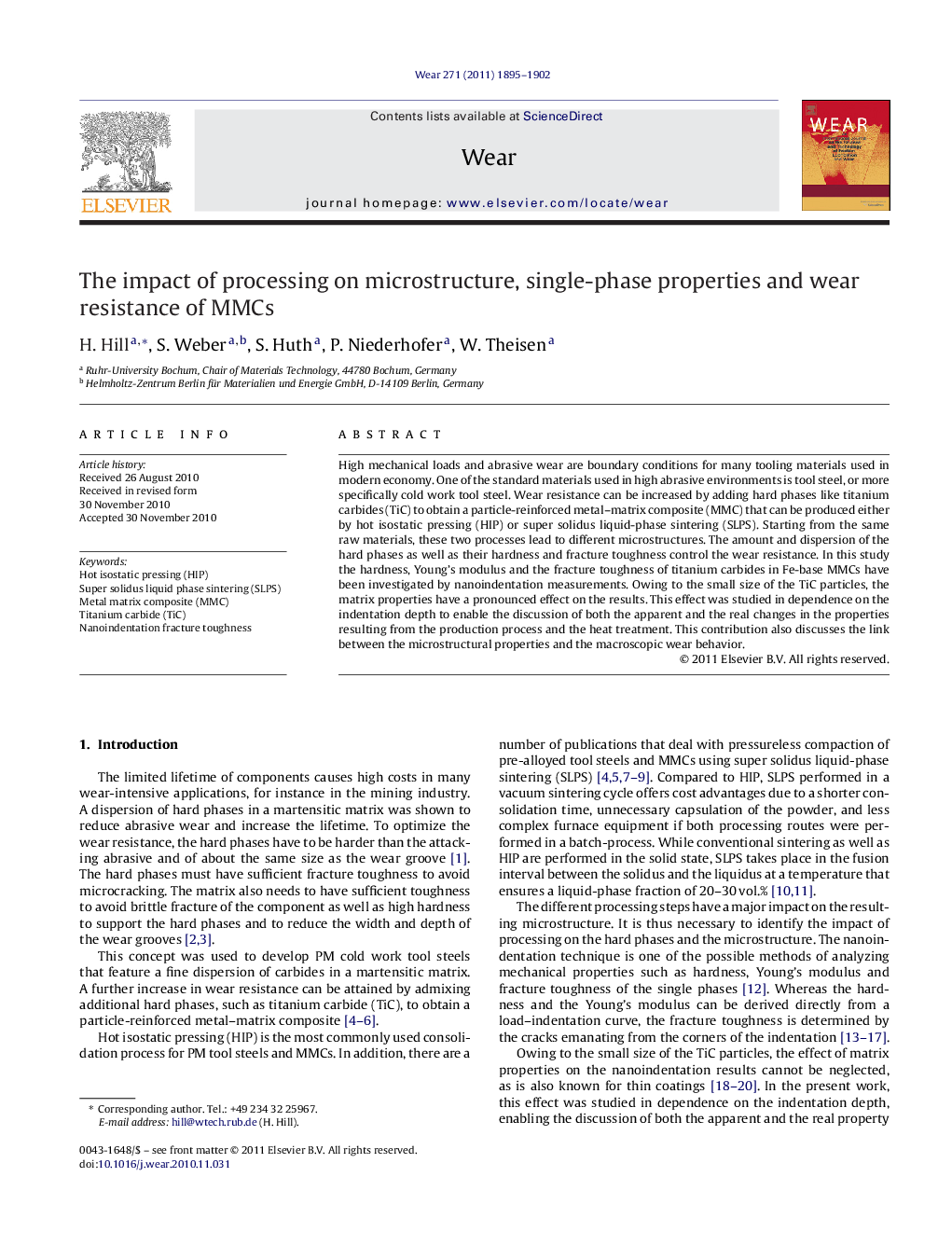| Article ID | Journal | Published Year | Pages | File Type |
|---|---|---|---|---|
| 618234 | Wear | 2011 | 8 Pages |
High mechanical loads and abrasive wear are boundary conditions for many tooling materials used in modern economy. One of the standard materials used in high abrasive environments is tool steel, or more specifically cold work tool steel. Wear resistance can be increased by adding hard phases like titanium carbides (TiC) to obtain a particle-reinforced metal–matrix composite (MMC) that can be produced either by hot isostatic pressing (HIP) or super solidus liquid-phase sintering (SLPS). Starting from the same raw materials, these two processes lead to different microstructures. The amount and dispersion of the hard phases as well as their hardness and fracture toughness control the wear resistance. In this study the hardness, Young's modulus and the fracture toughness of titanium carbides in Fe-base MMCs have been investigated by nanoindentation measurements. Owing to the small size of the TiC particles, the matrix properties have a pronounced effect on the results. This effect was studied in dependence on the indentation depth to enable the discussion of both the apparent and the real changes in the properties resulting from the production process and the heat treatment. This contribution also discusses the link between the microstructural properties and the macroscopic wear behavior.
► We produced MMCs either by HIP or SLPS. ► High temperatures lead to pronounced diffusion reactions and carbide coarsening. ► A sufficient matrix hardness is necessary for performing nanoindentation tests. ► Diffusion of vanadium and molybdenum changes the properties of the titanium carbides. ► Wear resistance is strongly influenced by morphology of the carbides.
